

How to maximise the language learning of senior learners. Smartphones & Learning possibilities in the EFL class. Some data on mobile usage growth 21st century classroom infographic Six hours a day.

CVC. Las competencias clave del profesorado de lenguas segundas y extranjeras. Introducción. El Instituto Cervantes tiene entre sus fines promover una enseñanza de calidad en todos sus centros. Para ello, es preciso atender la necesidad de describir y consolidar el perfil profesional de los docentes, lo que incluye definir las competencias del profesorado del Instituto Cervantes. El documento que a continuación se presenta es una descripción de las competencias que tienen o se espera que desarrollen los profesores del Instituto Cervantes a lo largo de su trayectoria profesional. Lejos de tratarse de una lista exhaustiva y cerrada, se recogen las ocho competencias del profesorado que el Instituto Cervantes, a partir de las creencias de los miembros de la institución y tomando en consideración investigaciones recientes en este campo, ha identificado como claves en este momento.
Science, health and medical journals, full text articles and books. A discussion about re-inventing our profession. This very interesting article is by Andy Gaskins, Assistant Director of Studies at St Giles London Central.
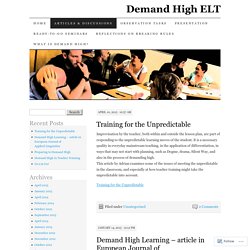
He asks a great question: Is Demand High only something that you can do spontaneously on the spot in class … or can you prepare for it? Preparing to Demand High Is Demand High teaching always a spontaneous response to student production, or can it be, at least partially, prepared in advance? Using Twitter for professional development – Lizzie Pinard. Twitter!

Image via google images search licensed for commercial use with modification Wikipedia defines Twitter as: Teacher Network. Literacy Through Photography for English-Language Learners. Enter most schools and you will hear about literacy instruction or the "literacy block.
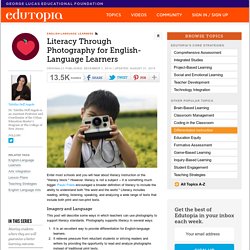
" However, literacy is not a subject -- it is something much bigger. Paulo Freire encouraged a broader definition of literacy to include the ability to understand both "the word and the world. " Literacy includes reading, writing, listening, speaking, and analyzing a wide range of texts that include both print and non-print texts. BusyTeacher.org. YouTube, as well as websites such as wikihow.com, instructables.com, and soyouwanna.com, have an incredible assortment of guides on how to do almost anything, from cutting up onions to making paper airplanes.
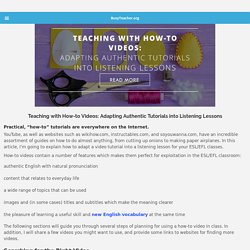
Teachingenglish.org. BusyTeacher.org. I think that’s because, as we read, we picture the characters and events in a certain way and we are always disappointed when the big screen doesn’t live up to our big imaginations.
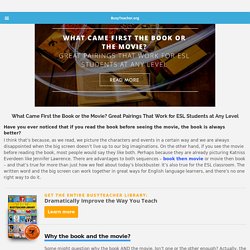
On the other hand, if you see the movie before reading the book, most people would say they like both. Perhaps because they are already picturing Katniss Everdeen like Jennifer Lawrence. There are advantages to both sequences – book then movie or movie then book – and that’s true for more than just how we feel about today’s blockbuster. It’s also true for the ESL classroom. The written word and the big screen can work together in great ways for English language learners, and there’s no one right way to do it.
Get the Entire BusyTeacher Library: Dramatically Improve the Way You Teach Learn more. BusyTeacher.org. While these are crucial concepts, others are equally important.

What follows is an assortment of alternative ways to teach listening, some quite simple and others based on many years of research. «Dinner» no significa «cena» en inglés – La pluma de Rosetta. Sí, yo también había vivido toda mi vida engañada hasta que una encantadora familia inglesa de Waterlooville me invitó una mañana de domingo a cenar a su casa… a la 1 de la tarde.
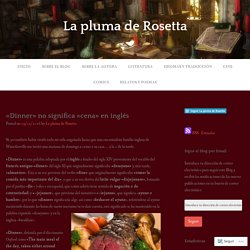
«Dinner» es una palabra adoptada por el inglés a finales del siglo XIV proveniente del vocablo del francés antiguo «disner» del siglo XI que originalmente significaba «desayuno» y, más tarde, «almuerzo». Avoid randomness: Three other ways of grouping students. – On the same page. A few weeks ago I wrote this summary about what an ideal cooperative language classroom would look like and the strengths of adopting such a model.

Even if you’re already working within a cooperative learning framework, however, there are times when we may want to change the types of interactions for specific tasks and offer the students more opportunities to communicate with other peers. This applies to other settings, too, where we often need to group students yet randomness does not just seem to be the most effective way to go about it if we want to make sure the students will be working in a rich, diverse environment that enhances learning. Besides, it is tasks like these that help to build rapport among students — and we all know how important this is to create a unique, positive classroom culture. The following are three grouping strategies that work well and are mainly based on the students’ interests and motivations, but also on their level of proficiency. 1. 2.
Using cartoons and comic strips. Cartoons are powerful teaching tools and can: Tell a complex story in a few imagesProvide comment and provoke thought on events and issues in the newsGive an example of vocabulary related to current trends and fadsProvide easily identifiable characters to form the basis for sketchesShow culture in action with the ways that men or women are behaving and are expected to behaveComment on and illustrate a whole range of issues like racism, teenage relationships, sexism, ageism, family relationships.

Word of warning: The language used can sometimes be too colloquial and referential for lower levels to cope with. Choose your cartoons and comic strips with care. 1. Action Plan for Teachers. Feedback and Error Correction – Is It Your Job? Error correction performed by the teacher followed by a feedback is a usual part of most traditional and even non-traditional school approaches. However, if we think about it, our ultimate goal is to teach the students how to become independent learners and be able to check their own work. Lack of awareness about the necessity of doing this has become one of my teaching challenges. Educational Technology and Mobile Learning: A New Fantastic Bloom's Taxonomy Wheel for iPad Apps.
March 21, 2014 Today while I was browsing through my Twitter feeds I came across this fabulous Bloom's Taxonomy wheel of apps shared by Anthony. If you still recall, some previous versions of this wheel have already been featured here in Bloom's Taxonomy for Teachers section . As you can see, the wheel outlines a wide variety of verbs and activities related to each thinking level of Blooms taxonomy coupled with iPad apps that go with it. These apps are supposed to help teachers and students better cultivate these different thinking levels in their use of iPad apps. And because the the visual is not hyperlinked, I went ahead and provided the links for each of these apps in the lists below. Enjoy. » Teaching English through songs in the digital age – #ELTchat summary 12/01/2011.
Mobile. What do a newspaper, a roadmap, and a webpage have in common? They are all great materials for the ESL classroom. Not only that, they are ...